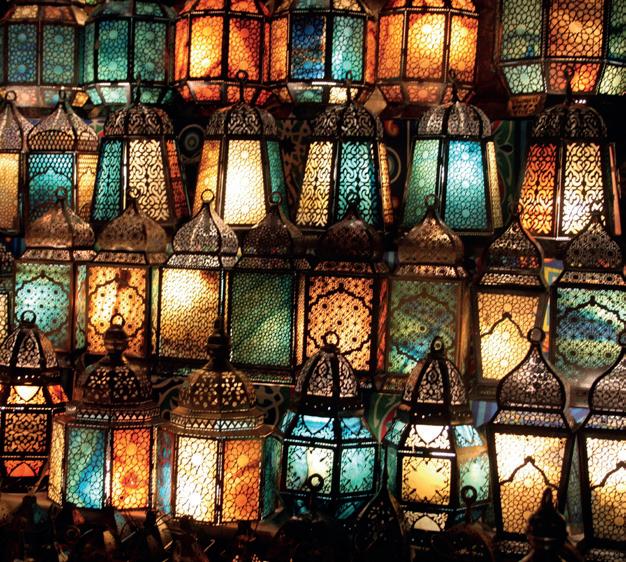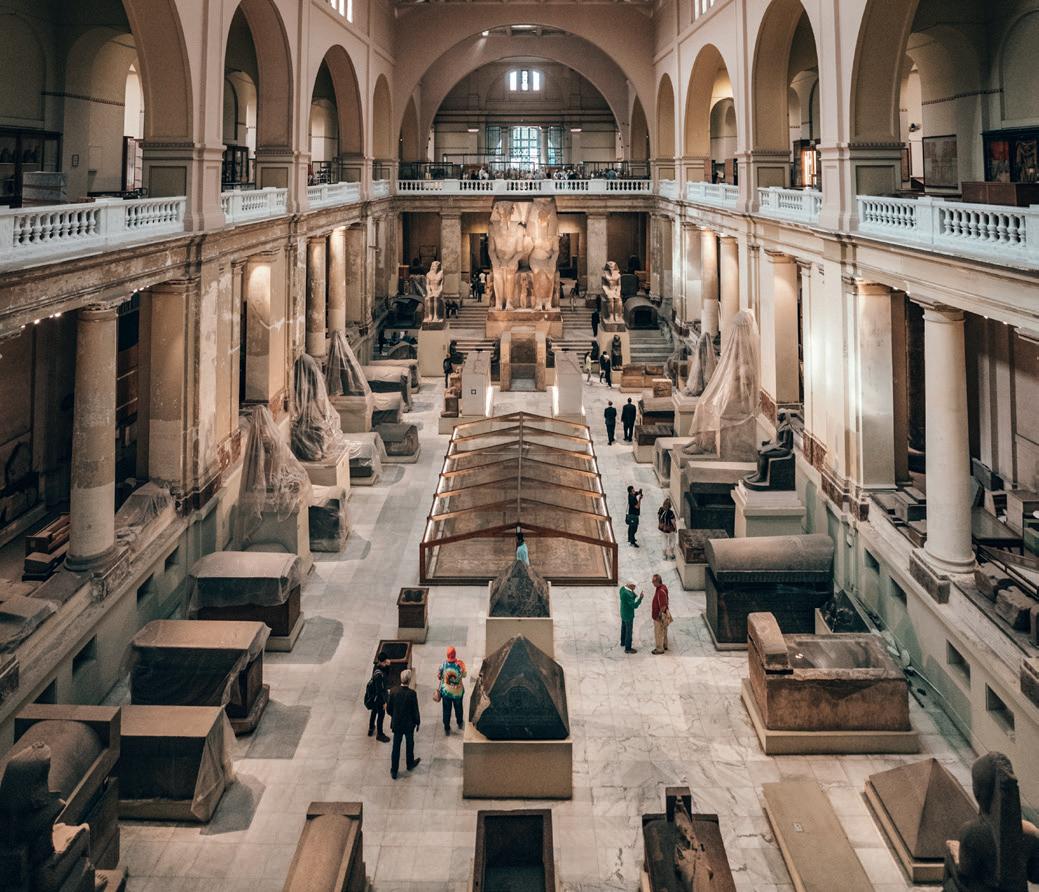
2 minute read
Postcard from: Cairo


Advertisement
By Laura Gelder
oo k a trip to Egypt B
Grand plans On a tour of the Grand Egyptian Museum (GEM), I saw Tutankhamun’s flip flops! Golden and jewelled, the thong sandals wouldn’t look out of place in my local branch of Accessorize, yet they’re over 3,000 years old. When it finally opens, after years of delays, GEM will be the largest archaeological museum in the world and house the first full collection of the young pharaoh’s treasures. The vast, ultramodern building is a short drive from the pyramids, monolithic Toblerone tombs that stand like ancient sentries between the city and the desert. Behind the scenes in GEM’s restoration labs, I saw delicate papyruses painted with mesmerising hieroglyphics, and ornate furniture intended for a luxurious afterlife. Off clinical corridors were various rooms, signs indicating a speciality: ‘wood’, ‘fabric’ and ‘human remains’. I spied a whitecoated Egyptologist bent over a wizened mummy through the tiny window in the last. And in the chilled still of the stone restoration room, rows of statues – kings and queens, gods and goddesses – stood together and stared.
domes & minarets in the dust
Omar Elsharawy Ancient treasures
Outside, Cairo thrummed with energy. The traffic was sluggish and antagonistic, belting out exhaust fumes and a cacophony of horns. My taxi swept past dingy shop fronts, but above were wrought iron balconies and green shutters like Paris. Seconds later, as we swept over a flyover, I looked down on a gaudy market street that was 100% African.
We drove to the Egyptian Museum, Cairo’s current home for antiquities, housed in a pink stone building. Inside is an astounding collection of
In Restaurant Naguib Mahfouz, fez-topped waiters serve chargrilled chicken, crisp falafel and silky hummus Naomi Koelemans statues, some so huge and with warm, crusty flat breads The Egyptian Museum Spencer Davis monolithic it’s hard to imagine how they got inside. Upstairs, vaulted ceilings and archways gave way to galleries lined with dusty wooden cabinets displaying artefacts ranging from broken pottery to scarab beetles studded with softly gleaming gems. The pièce de résistance was Tutankhamun’s gold mask. The eyes are lined with lapiz lasuli, making the The labyrinthine Khan El Khalili Bazaar is whites sparkle and his huge, obsidian pupils stare defiantly. The opening of GEM will be filled with dimly-lit stalls, piled high with exciting but this evocative treasure trove will surely brass lanterns, carpets, silk scarves and spices never be replaced.










